Abstract
1. We have investigated the loss of power seen during high-intensity exercise of human leg muscles such as might occur during sprinting. Subjects exercised the quadriceps and hamstring muscle groups using a Cybex dynamometer at an angular velocity of 90 deg s-1 once a second for 6 min. At 1 min intervals the quadriceps were electrically stimulated via the femoral nerve to produce an isometric contraction which was then released into an isokinetic shortening contraction at 90 deg s-1. 2. The extent of central fatigue was assessed by comparing the force of a voluntary isokinetic contraction with that elicited by electrical stimulation during isokinetic releases. Two subjects were repeatedly tested. In the first series of experiments, exercising the quadriceps of one leg, the instantaneous power fell to about 50% over the course of 2 min and remained constant for the rest of the exercise. For one subject the voluntary and electrically stimulated forces declined in parallel while for the second subject the voluntary force was 10% less than the stimulated force at the end of the exercise. These results show that central fatigue represented a minor factor contributing no more than one-fifth of the total loss of power in these circumstances. 3. In a second series of experiments the subjects alternately contracted the quadriceps and the hamstrings of both legs in an exercise which had a high rating of perceived exertion and entailed considerable respiratory and cardiovascular effort. The time course and proportionate loss of power were very similar to those seen with the one-leg exercise and neither subject showed evidence of significant central fatigue. The pattern of force loss was very similar for the hamstrings. We conclude that, for determined subjects, afferent feedback from muscles, tendons and joints or from the respiratory and cardiovascular systems does not have a major role in inhibiting voluntary activation of the quadriceps during heavy exercise. 4. In both series of experiments the power output during electrically stimulated isokinetic contractions was reduced to 50% of the initial value after 2 min of exercise while the isometric force, measured immediately before the release, fell to only 75%. This suggests that fatigue affects isometric and shortening contractions to different extents and the loss of power may be due to a combination of factors, only one of which is evident in the loss of isometric force.
Full text
PDF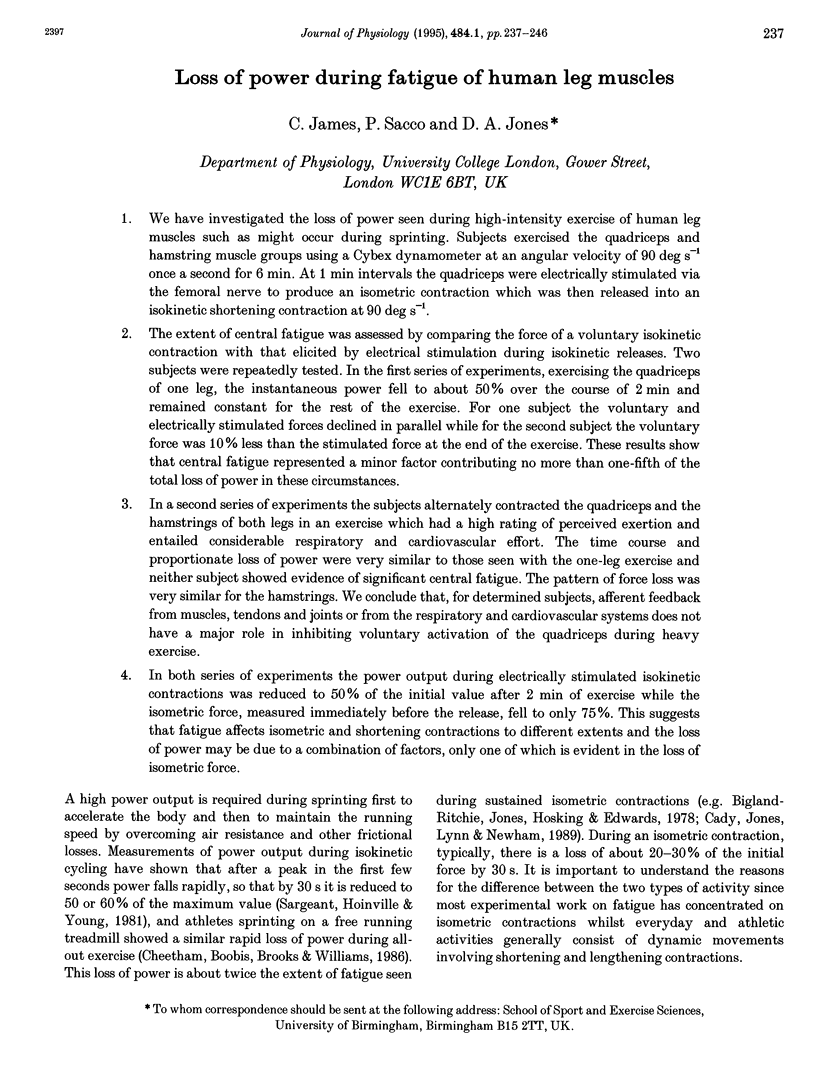
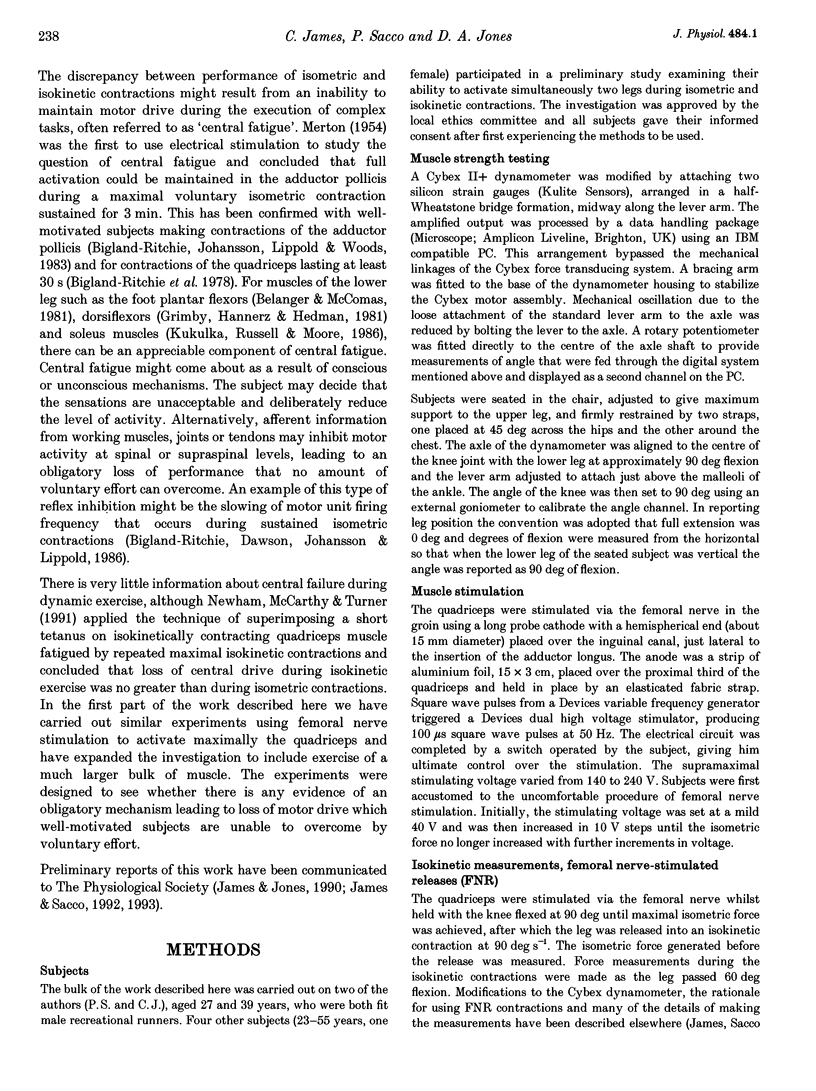
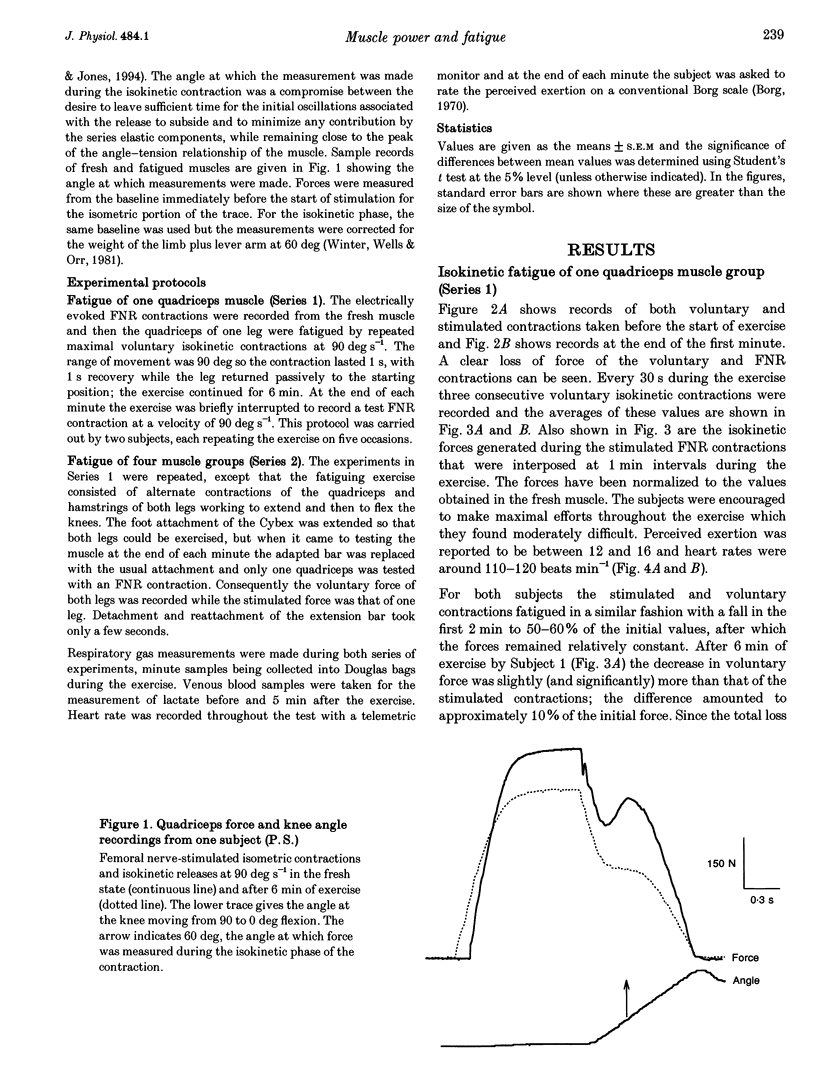
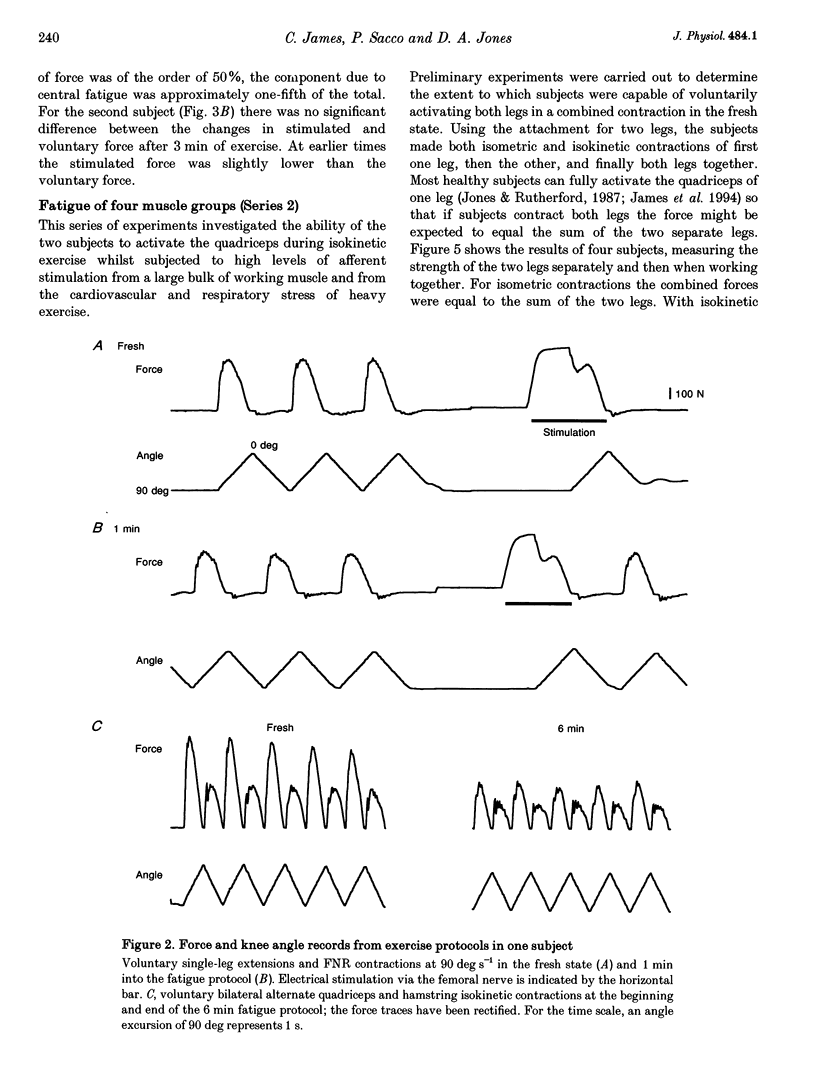
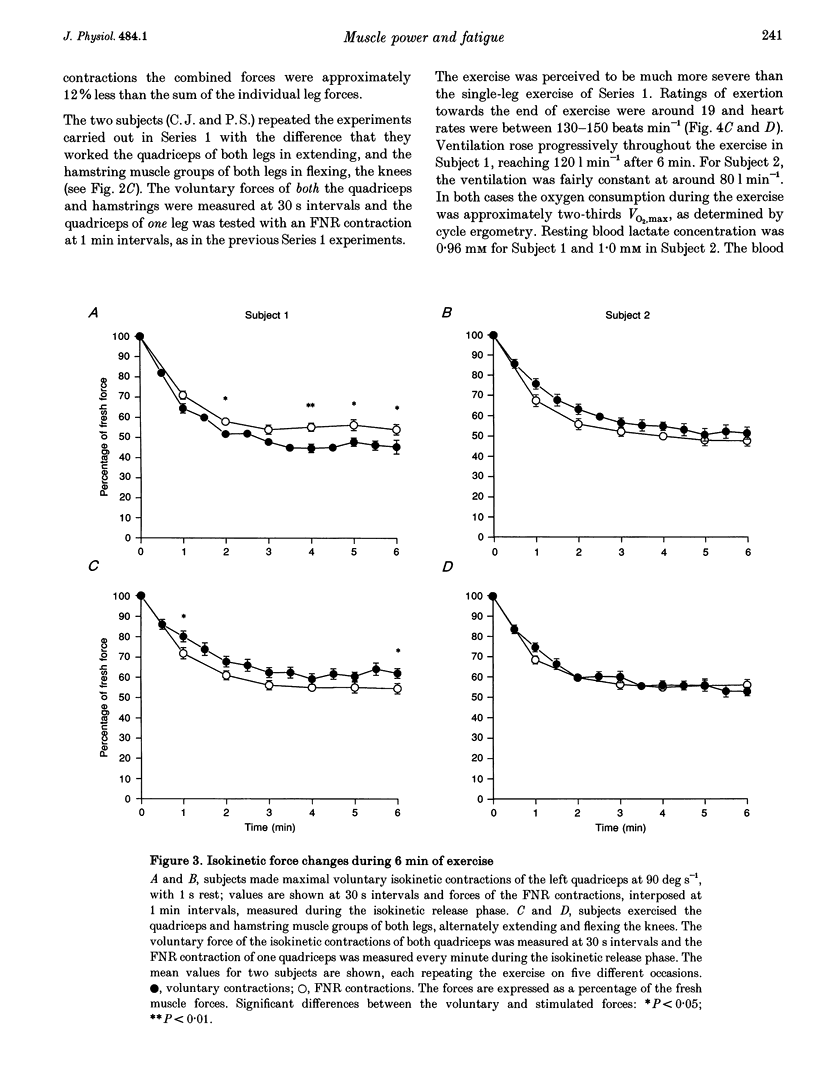
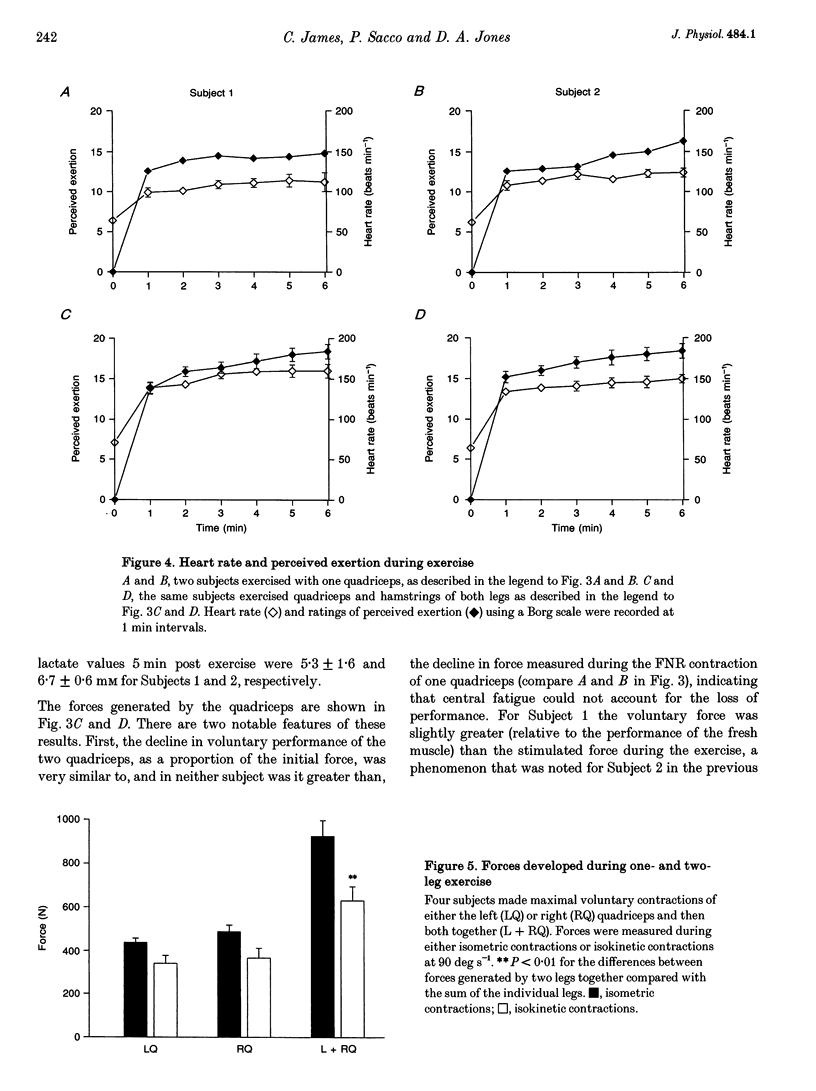
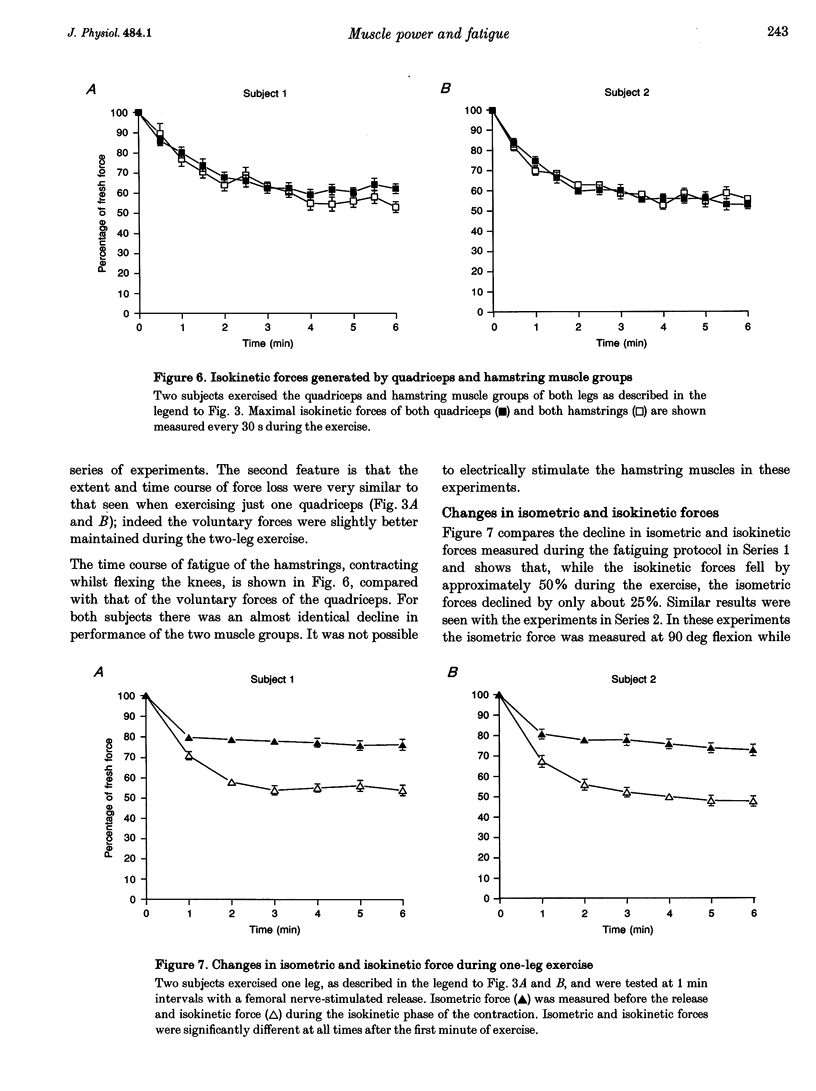
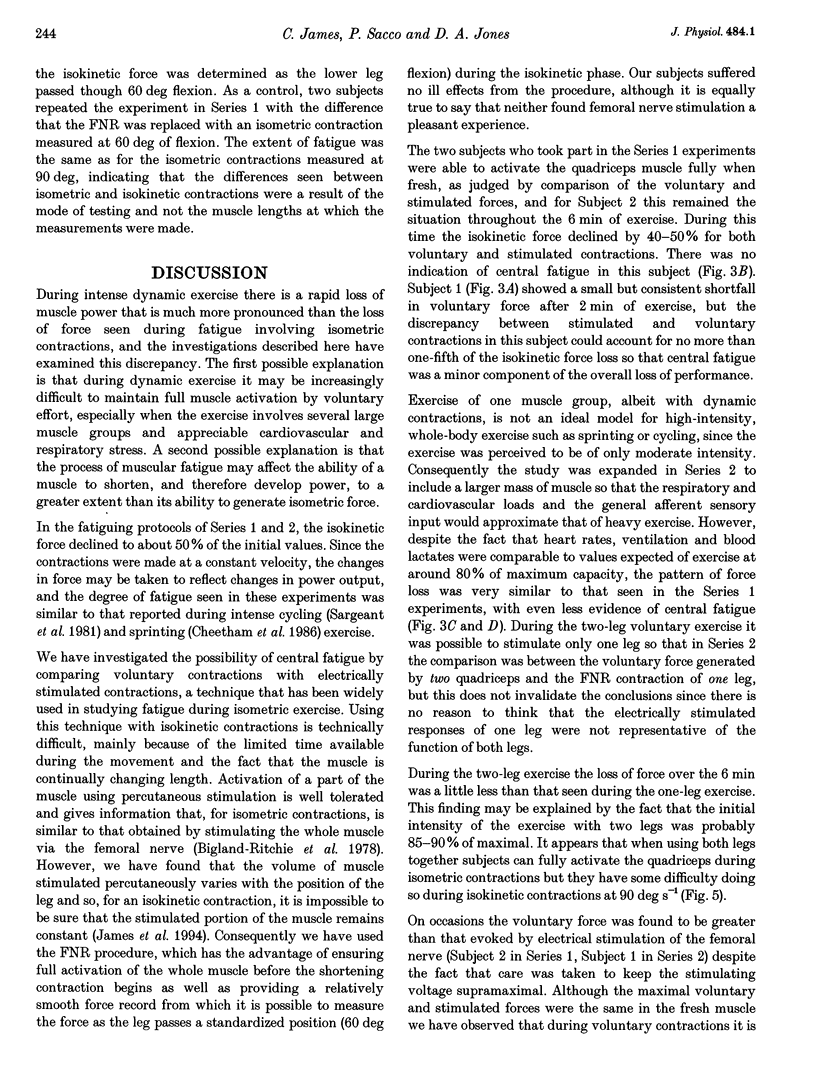
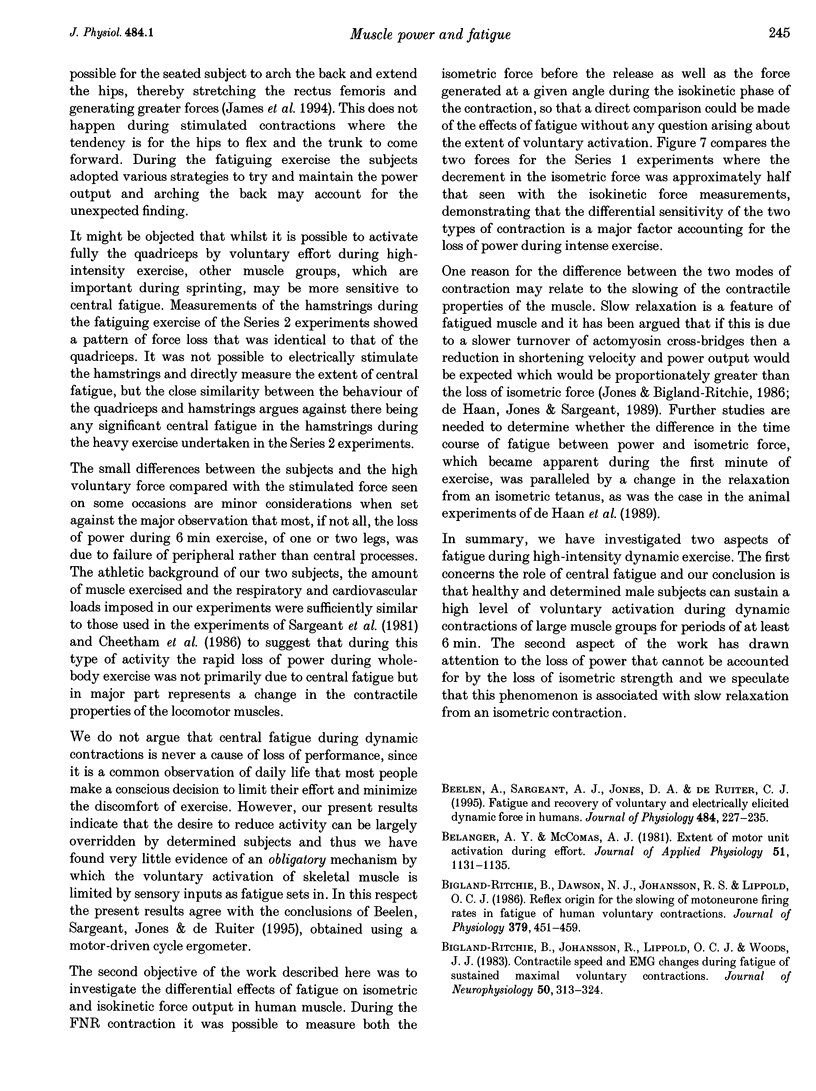
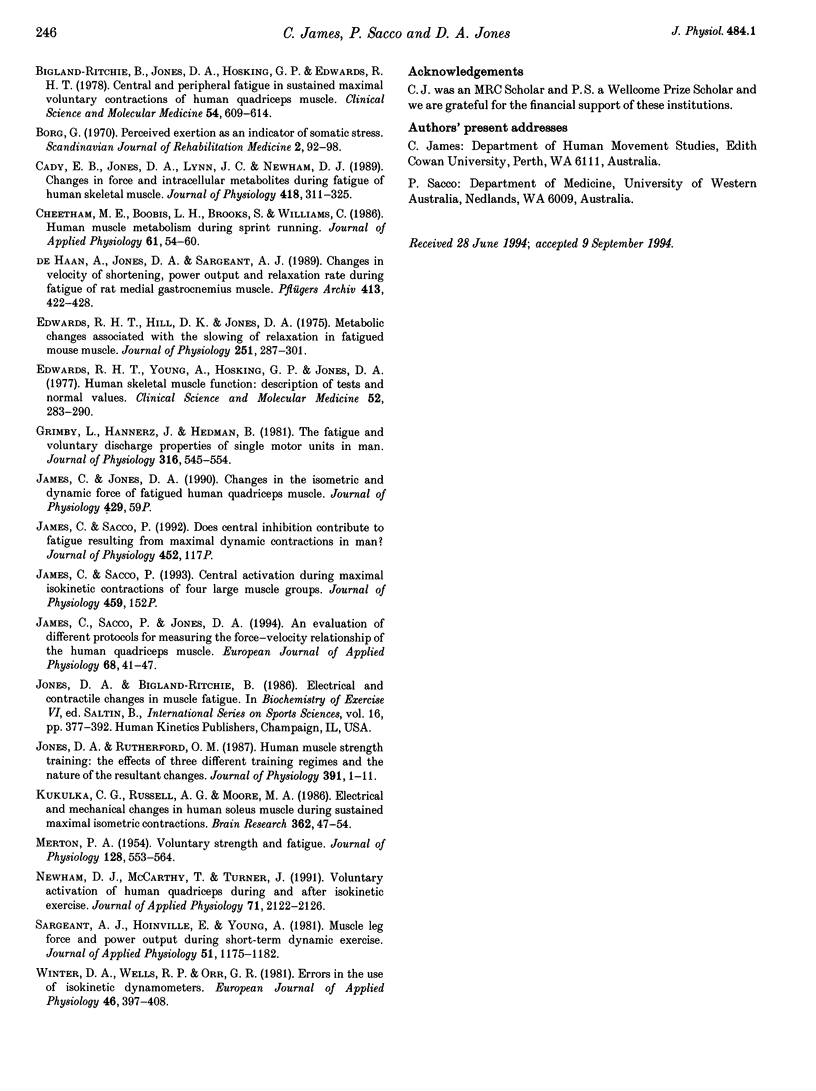
Selected References
These references are in PubMed. This may not be the complete list of references from this article.
- Beelen A., Sargeant A. J., Jones D. A., de Ruiter C. J. Fatigue and recovery of voluntary and electrically elicited dynamic force in humans. J Physiol. 1995 Apr 1;484(Pt 1):227–235. doi: 10.1113/jphysiol.1995.sp020660. [DOI] [PMC free article] [PubMed] [Google Scholar]
- Belanger A. Y., McComas A. J. Extent of motor unit activation during effort. J Appl Physiol Respir Environ Exerc Physiol. 1981 Nov;51(5):1131–1135. doi: 10.1152/jappl.1981.51.5.1131. [DOI] [PubMed] [Google Scholar]
- Bigland-Ritchie B. R., Dawson N. J., Johansson R. S., Lippold O. C. Reflex origin for the slowing of motoneurone firing rates in fatigue of human voluntary contractions. J Physiol. 1986 Oct;379:451–459. doi: 10.1113/jphysiol.1986.sp016263. [DOI] [PMC free article] [PubMed] [Google Scholar]
- Bigland-Ritchie B., Johansson R., Lippold O. C., Woods J. J. Contractile speed and EMG changes during fatigue of sustained maximal voluntary contractions. J Neurophysiol. 1983 Jul;50(1):313–324. doi: 10.1152/jn.1983.50.1.313. [DOI] [PubMed] [Google Scholar]
- Bigland-Ritchie B., Jones D. A., Hosking G. P., Edwards R. H. Central and peripheral fatigue in sustained maximum voluntary contractions of human quadriceps muscle. Clin Sci Mol Med. 1978 Jun;54(6):609–614. doi: 10.1042/cs0540609. [DOI] [PubMed] [Google Scholar]
- Borg G. Perceived exertion as an indicator of somatic stress. Scand J Rehabil Med. 1970;2(2):92–98. [PubMed] [Google Scholar]
- Cady E. B., Jones D. A., Lynn J., Newham D. J. Changes in force and intracellular metabolites during fatigue of human skeletal muscle. J Physiol. 1989 Nov;418:311–325. doi: 10.1113/jphysiol.1989.sp017842. [DOI] [PMC free article] [PubMed] [Google Scholar]
- Cheetham M. E., Boobis L. H., Brooks S., Williams C. Human muscle metabolism during sprint running. J Appl Physiol (1985) 1986 Jul;61(1):54–60. doi: 10.1152/jappl.1986.61.1.54. [DOI] [PubMed] [Google Scholar]
- Edwards R. H., Hill D. K., Jones D. A. Metabolic changes associated with the slowing of relaxation in fatigued mouse muscle. J Physiol. 1975 Oct;251(2):287–301. doi: 10.1113/jphysiol.1975.sp011093. [DOI] [PMC free article] [PubMed] [Google Scholar]
- Edwards R. H., Young A., Hosking G. P., Jones D. A. Human skeletal muscle function: description of tests and normal values. Clin Sci Mol Med. 1977 Mar;52(3):283–290. doi: 10.1042/cs0520283. [DOI] [PubMed] [Google Scholar]
- Grimby L., Hannerz J., Hedman B. The fatigue and voluntary discharge properties of single motor units in man. J Physiol. 1981 Jul;316:545–554. doi: 10.1113/jphysiol.1981.sp013805. [DOI] [PMC free article] [PubMed] [Google Scholar]
- James C., Sacco P., Hurley M. V., Jones D. A. An evaluation of different protocols for measuring the force-velocity relationship of the human quadriceps muscles. Eur J Appl Physiol Occup Physiol. 1994;68(1):41–47. doi: 10.1007/BF00599240. [DOI] [PubMed] [Google Scholar]
- Jones D. A., Rutherford O. M. Human muscle strength training: the effects of three different regimens and the nature of the resultant changes. J Physiol. 1987 Oct;391:1–11. doi: 10.1113/jphysiol.1987.sp016721. [DOI] [PMC free article] [PubMed] [Google Scholar]
- Kukulka C. G., Russell A. G., Moore M. A. Electrical and mechanical changes in human soleus muscle during sustained maximum isometric contractions. Brain Res. 1986 Jan 1;362(1):47–54. doi: 10.1016/0006-8993(86)91397-1. [DOI] [PubMed] [Google Scholar]
- MERTON P. A. Voluntary strength and fatigue. J Physiol. 1954 Mar 29;123(3):553–564. doi: 10.1113/jphysiol.1954.sp005070. [DOI] [PMC free article] [PubMed] [Google Scholar]
- Newham D. J., McCarthy T., Turner J. Voluntary activation of human quadriceps during and after isokinetic exercise. J Appl Physiol (1985) 1991 Dec;71(6):2122–2126. doi: 10.1152/jappl.1991.71.6.2122. [DOI] [PubMed] [Google Scholar]
- Sargeant A. J., Hoinville E., Young A. Maximum leg force and power output during short-term dynamic exercise. J Appl Physiol Respir Environ Exerc Physiol. 1981 Nov;51(5):1175–1182. doi: 10.1152/jappl.1981.51.5.1175. [DOI] [PubMed] [Google Scholar]
- Winter D. A., Wells R. P., Orr G. W. Errors in the use of isokinetic dynamometers. Eur J Appl Physiol Occup Physiol. 1981;46(4):397–408. doi: 10.1007/BF00422127. [DOI] [PubMed] [Google Scholar]
- de Haan A., Jones D. A., Sargeant A. J. Changes in velocity of shortening, power output and relaxation rate during fatigue of rat medial gastrocnemius muscle. Pflugers Arch. 1989 Feb;413(4):422–428. doi: 10.1007/BF00584493. [DOI] [PubMed] [Google Scholar]


